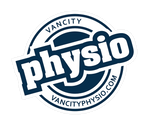Sciatica is a condition that affects millions of people worldwide, causing pain that radiates along the sciatic nerve from the lower back down to the legs. This pain can range from mild discomfort to severe, debilitating pain that interferes with daily activities. Fortunately, physiotherapy offers an effective, non-invasive solution for managing and alleviating sciatica symptoms.
In this guide, we’ll explore what sciatica is, its common causes, and how physiotherapy can help treat and prevent it.
What is Sciatica?
Sciatica isn’t a diagnosis in itself but rather a symptom of an underlying condition. The term refers to pain that occurs along the path of the sciatic nerve, which runs from the lower back through the hips and buttocks and down each leg.
It often manifests as:
-
Pain along the lower back, buttocks, and down one leg (sometimes to the foot)
-
Numbness or weakness in the affected leg or foot
-
Tingling or “pins and needles” sensations
-
Difficulty moving or standing up
Common Causes of Sciatica
Sciatica can be caused by several factors, including:
-
Herniated or Slipped Disc: When a disc in the spine becomes herniated or slips out of place, it can press on the sciatic nerve.
-
Spinal Stenosis: Narrowing of the spinal canal that puts pressure on nerves.
-
Spondylolisthesis: When a vertebra slips out of place.
-
Piriformis Syndrome: Irritation or compression of the sciatic nerve by the piriformis muscle.
-
Degenerative Disc Disease: Age-related changes that lead to herniated discs or nerve irritation.
-
Injury or Trauma: Injuries to the lower back or pelvis that affect the sciatic nerve.
How Physiotherapy Can Help
Physiotherapy is a highly effective treatment option for sciatica. The goal is to reduce pain, improve mobility, strengthen muscles, and prevent future episodes.
Pain Relief Techniques
-
Heat and Cold Therapy: Ice is often used during the acute phase to reduce inflammation, while heat helps once initial inflammation has subsided.
-
Manual Therapy: Hands-on techniques such as massage, joint mobilizations, or spinal manipulation relieve tension, improve circulation, and reduce stiffness.
-
Electrical Stimulation (TENS): Can reduce pain by stimulating nerves and improving blood flow.
-
Ultrasound Therapy: Provides deep tissue warmth, reduces inflammation, and promotes healing.
Exercise Therapy
-
Stretching and Flexibility: Targeted stretches for the hamstrings, hips, and lower back relieve pressure on the sciatic nerve and improve mobility.
-
Strengthening Exercises: Building strength in the core, back, and leg muscles helps stabilize the spine and reduce strain. Exercises may include pelvic tilts, bridges, and leg raises.
-
Core Stability Training: Strengthening core muscles supports the spine and reduces pressure on the sciatic nerve.
Posture and Body Mechanics
-
Postural Correction: Physiotherapists educate patients on proper posture during sitting, standing, and daily activities.
-
Ergonomic Adjustments: Recommendations for workstations or home setups to reduce strain.
-
Proper Lifting Techniques: Training in safe lifting to avoid flare-ups.
-
Activity Modification: Guidance on safer ways to sit, stand, and move.
Functional Rehabilitation
-
Physiotherapy often includes functional exercises that mimic daily activities, ensuring you can return to your normal routines safely and without pain.
Preventing Sciatica with Physiotherapy
Physiotherapy doesn’t just treat sciatica — it helps prevent recurrence. Key prevention strategies include:
-
Maintain Good Posture: Keep weight evenly distributed while standing; use supportive seating when sitting.
-
Stretch Regularly: Consistently stretch hamstrings, hip flexors, and lower back muscles to prevent stiffness.
-
Strengthen Core and Back Muscles: Build stability and reduce stress on the spine.
-
Exercise Regularly: Low-impact activities such as swimming, walking, and cycling promote spinal health.
-
Weight Management: Excess weight increases strain on the spine and sciatic nerve.
When to Seek Physiotherapy
You should see a physiotherapist if:
-
You experience sharp or chronic pain radiating down your leg.
-
Numbness or weakness in your leg or foot affects mobility.
-
Sciatica is interfering with daily activities or sleep.
-
Conservative treatments like rest or over-the-counter medications are not helping.
A physiotherapist will evaluate your condition, identify underlying causes, and create a personalized treatment plan.
Conclusion
Sciatica can be painful and frustrating, but with the right treatment approach, it’s possible to manage and even eliminate symptoms. Physiotherapy offers a comprehensive, personalized approach to treating sciatica — addressing both symptoms and underlying causes.
With pain relief techniques, tailored exercise programs, posture education, and long-term prevention strategies, physiotherapy empowers you to regain mobility and reduce pain. If you’re suffering from sciatica, consider consulting with a physiotherapist to develop a treatment plan tailored to your needs.
Physiotherapy offers a comprehensive, personalized approach to treating sciatica, addressing not just the symptoms but also the underlying causes. If you're suffering from sciatica, consider consulting with a physiotherapist to develop a treatment plan tailored to your needs. With the right care, you can regain your mobility, reduce your pain, and get back to doing the things you love.


